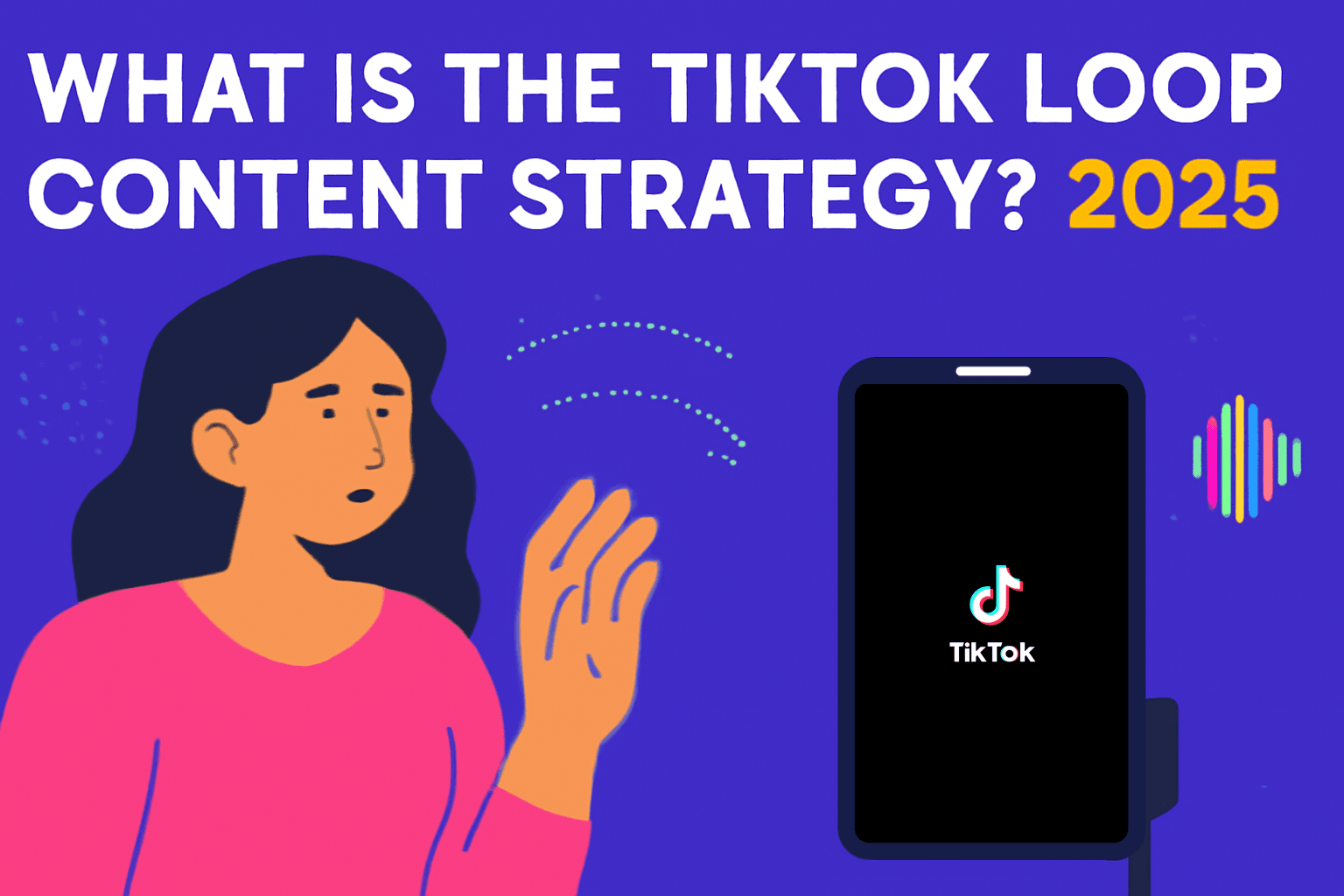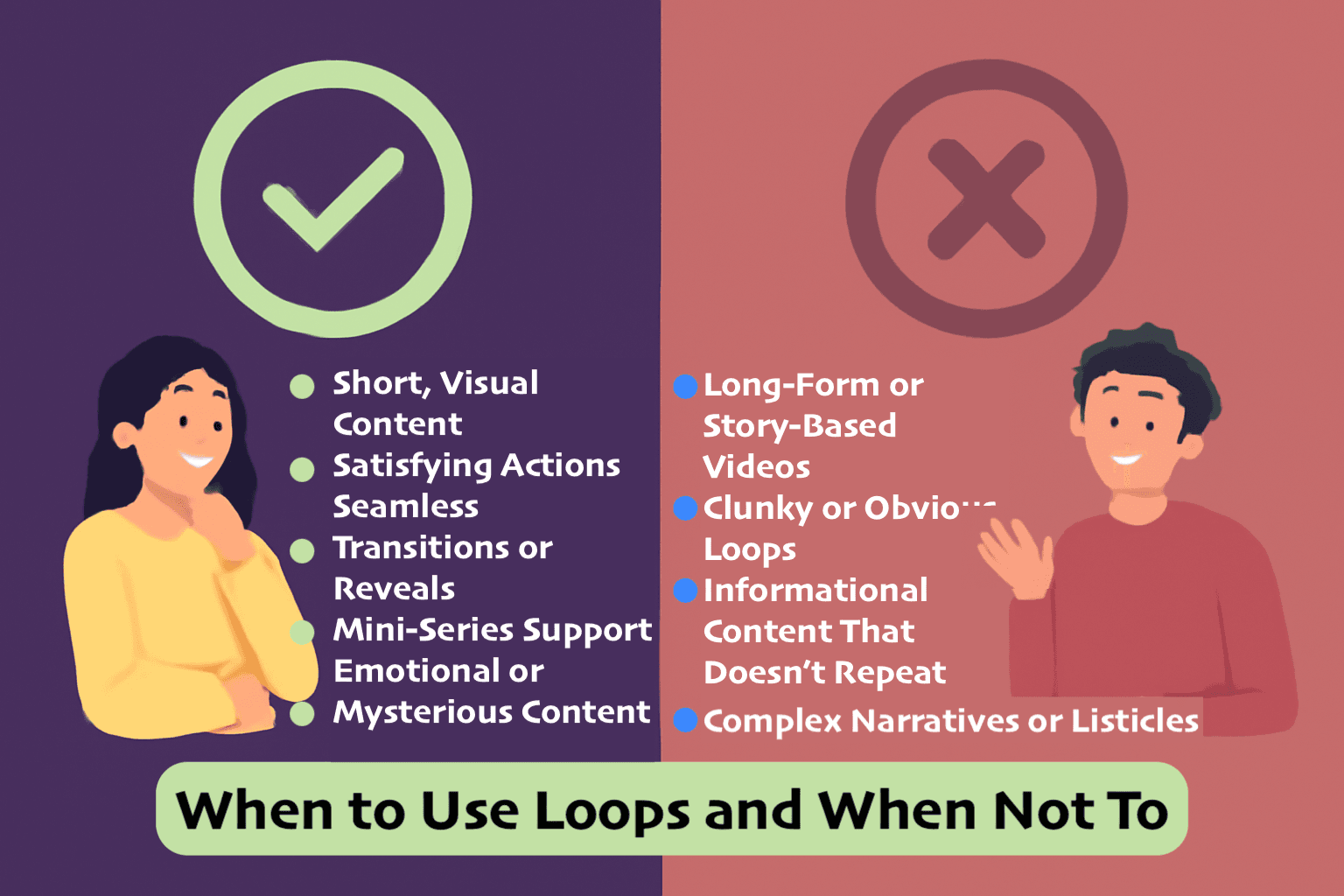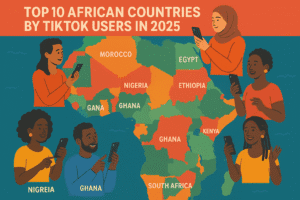What Is the TikTok Loop Content Strategy?
The TikTok loop content strategy is a video editing approach where the ending of a video flows so seamlessly into the beginning that it feels like it never ended. It’s not a glitch — it’s an intentional design to trick the viewer’s brain into watching again… and again.
At its core, this strategy relies on one powerful outcome: replays. When someone rewatches your video (even accidentally), TikTok’s algorithm sees that as a sign of high-quality, engaging content. The more replays you get, the stronger the retention signal, and the more likely TikTok is to push your video to a wider audience.
But what makes a loop really work?
It’s not just about trimming the clip at the right second. A great loop uses visual cues, audio continuity, and sometimes even clever misdirection to create a hypnotic effect. When done well, the loop resets before the viewer has a chance to swipe — keeping them engaged without breaking their flow.
Unlike longer videos that require a full story arc, loops thrive on simplicity and surprise. A 10–15 second clip that replays smoothly can outperform a 60-second video with clunky pacing.
And in 2025, where attention spans are shorter and the For You Page moves faster than ever, looping content isn’t optional — it’s a smart survival tactic.
Why TikTok Replay trick and Watch Time Are Critical in 2025
In 2025, TikTok’s algorithm doesn’t just want content — it wants content that keeps people watching. That means metrics like boost TikTok watch time, loop count, and video completions are more important than ever. And that’s exactly where the loop content strategy shines.
Here’s how it works behind the scenes:
When someone watches your video from start to finish — or even better, replays it multiple times — TikTok registers this as high-quality engagement. This tells the algorithm, “This video is sticky. People aren’t swiping away.” The result? Your content gets pushed to more For You Pages.
Now, let’s zoom in on the power of looping.
A great looped video (usually under 15 seconds) tricks the viewer into watching it two or three times before they even notice it restarted. That means you’re getting multiple views and retention signals — all from one piece of content.
Creators in every niche — from ASMR to art, fashion, memes, even micro-tutorials — are using this strategy to stack engagement without needing to go viral in the traditional way. And because loops feel smooth, natural, and sometimes even hypnotic, they align perfectly with the way TikTok users scroll: fast, passive, and immersive.
TikTok rewards content that feels good to watch, and loops — when done right — give users that “just one more time” effect.
Next, we’ll show you five specific loop techniques creators are using to make it all happen.
5 Looping Techniques Creators Are Using
If you want to master the TikTok loop content strategy, you need more than just a short video — you need a clever reset. Below are five proven loop techniques that creators are using in 2025 to boost replay rates and keep their audience hooked.
Each one is easy to test and works across niches — from comedy to beauty to food and beyond.
1. Looped Audio Sync
This technique uses music or sound clips that naturally cycle. The video is edited so the beat or lyric restarts exactly where the video ends.
Why it works:
The sound masks the reset. It tricks your brain into thinking it’s still one continuous clip.
Best for: Lip syncs, trend sounds, music-driven edits.
@gshskgmauai Now you know 🤷♂️ #lipsync #brunette #tan #fyp #blowup ♬ som original – 𝕵𝖔𝖊𝖑 🕸️
2. Visual Match Cuts
With match cuts, the video ends and starts on nearly identical frames — same lighting, same subject, same positioning.
Why it works:
The viewer doesn’t notice a shift, so the video feels seamless — and they keep watching.
Best for: Beauty transitions, outfit changes, visual loops (like drawing, cutting, pouring, etc.).
@timeasocol An easy tutorial to film this sick transition – use the 0.5x back camera for best results 🫶🏻 #videotutorials #tutorialsvideos #transitions #outfıtinspo #fits #outfitinspiration #immabe #tutorials ♬ som original – Culture B
3. Fake Endings
This one plays with expectations. You create a moment that feels like the end — fade to black, a pause, a freeze — but then something surprising or funny happens to restart the action.
Why it works:
It makes people curious. The viewer thinks, “Wait, what did I miss?” and replays the video.
Best for: Comedy, reaction content, POVs, storytelling.
@whispersfromreality The Tollbooth Caller | American Urban Legend #scarystory #animation #truestory #mystery #unitedstates #horrorstory #fyp #redroom #creepypasta ♬ original sound – Whispers From Reality
4. Reverse Loops
You run your clip forward… then reverse it. When done right, it creates a mirrored sequence that resets to the beginning without cutting.
Why it works:
It’s hypnotic, satisfying, and visually smooth. Plus, it plays well with music loops.
Best for: Art, aesthetic edits, transitions, transformations.
@luhhhmi hit wonder #fyp #loop #reverse #edit #foryoupage #CapCut ♬ original sound – ່
5. Repetitive Actions
This is the easiest to execute — record a short, satisfying action (like pouring coffee, brushing paint, mixing, dancing), and make sure the final frame aligns with the start.
Why it works:
Repetition creates rhythm. And on TikTok, rhythmic content = better engagement.
Best for: ASMR, food prep, DIY, mini-vlogs.
@asmrberlinn Giving you glowy glass skin 😫 with these @Truly Beauty products (not sponsored) #asmr #asmrsounds #fyp #foryou #asmrvideo #relax #personalattention #sleep #trulybeauty #trulytiktokchallenge ♬ original sound – berlin
If you’re wondering how to make a looping TikTok using these techniques, don’t worry — you don’t need advanced gear. Tools like CapCut, InShot, and TikTok’s built-in trim and reverse features are all you need to test these out today.
When to Use Loops — and When Not To
Just because you can loop a TikTok doesn’t mean you should. The TikTok loop content strategy works best when it feels natural — not forced. Let’s break down when to use loops effectively… and when to skip them.
Best Times to Use Loops
1. Short, Visual Content
Loops shine in videos under 15 seconds, especially when there’s something eye-catching happening — like makeup transitions, ASMR clips, cooking, or artsy edits.
2. Satisfying Actions
If your content includes anything repetitive and satisfying (like stirring paint, flipping pancakes, or applying eyeliner), looping adds rhythm and memorability.
3. Seamless Transitions or Reveals
When your video includes a strong before-and-after or a smooth visual transformation, a loop helps emphasize the effect and encourages replay.
4. Mini-Series Support
Already using a TikTok mini-series strategy? Loops work great between parts to keep momentum. A seamless part 1 loop keeps viewers around longer before introducing part 2.
5. Emotional or Mysterious Content
Clips that leave viewers asking “Wait, what just happened?” often benefit from looping — people rewatch to catch what they missed.
When Not to Use Loops
1. Long-Form or Story-Based Videos
If your video is 30 seconds or longer and tells a story with a clear ending, looping can confuse viewers or dilute the message.
2. Clunky or Obvious Loops
If your cut is too sharp or the transition is jarring, users will swipe away. A forced loop can hurt more than help.
3. Informational Content That Doesn’t Repeat Well
Educational tips or spoken-word content doesn’t always loop naturally — especially if there’s no visual rhythm to support it.
4. Complex Narratives or Listicles
If your content requires structure (like “3 tips for growth” or “step-by-step guides”), let it finish cleanly. Looping may hurt clarity.
Pro Tip
If you’re unsure whether your video should loop, ask yourself:
“Will the viewer want to see this again without realizing it?”
If the answer is yes — go for it. If not, focus on creating a strong hook and clean finish instead.
Can Looping Content Be Combined With Paid Engagement?
Absolutely — and in 2025, smart creators are doing just that.
Let’s be clear: looping content works on its own. It’s a legitimate way to earn more watch time, improve your replay ratio, and trigger the TikTok algorithm naturally. But if you want to speed up your visibility and reach, paid looping video engagement can create a powerful combo.
Here’s How It Works:
You publish a short, looping TikTok that’s optimized for replays and retention. TikTok picks up on the engagement… but like any content, it still needs initial traction. By strategically boosting that video with real-looking TikTok views or followers, you give it the “proof of popularity” the algorithm responds to. Suddenly, your replay-friendly content gets surfaced faster — reaching real users while still delivering the kind of performance TikTok rewards.
But Don’t Just Buy Engagement Blindly
Here’s the catch: if your video isn’t good, no amount of views will save it.
The key is to only use paid TikTok engagement on loop content that already shows promise. Think:
- High completion rate
- Fast viewer feedback (likes, comments)
- Solid hook in the first 2 seconds
- Natural loop that keeps people rewatching
Paid boosts can amplify organic performance — but they can’t fake it from zero. You still need a strong loop strategy in place.
Pro Tip: Start Small
Start by testing a looping video organically. If it performs well in the first few hours, then apply a small engagement boost — just enough to increase visibility without triggering spam filters.
Need a safe, trusted option?
Check out our TikTok likes page — we only list strategies and services that align with platform safety and growth best practices.
Final Tips for Mastering Loop Content in 2025
By now, you know the “what” and “why” of TikTok loop content — but if you’re ready to actually put this strategy into action, here are the creator-tested tips that make the biggest difference.
- Keep It Under 15 Seconds
Shorter videos loop better. Aim for 8 to 12 seconds if possible — it’s the sweet spot for attention and replays.
- Match Your Audio and Visuals
If your visuals restart perfectly but your sound has an awkward cut, the loop will feel broken. Use a repeating beat or cut your audio on a natural downbeat to create a clean audio loop.
- Think From the Viewer’s POV
Ask yourself:“Would this confuse or delight someone if it restarted without warning?”If it’s confusing, refine it. If it’s satisfying, it’s loop-ready.
- Trim Mercilessly
Extra frames at the beginning or end ruin the loop. Cut tight, use hard match cuts, and don’t leave in transitions that signal “the end.”
- Test and Learn
Some loops will flop. That’s normal. Try different types — visual loops, action loops, sound loops — and track which formats generate the most replays.
Bonus Tools:
- CapCut – Great for beat sync and visual trimming
- InShot – Easy reverse and loop exports
- TikTok’s Editor – Surprisingly powerful for short cuts and match transitions
Looping content isn’t just a trend — it’s becoming one of TikTok’s core video formats. And creators who learn to master it will have a serious edge in 2025.
Let’s wrap it all up.
In 2025, looping TikTok content is one of the smartest strategies for boosting your watch time, replay rate, and overall algorithm reach — without needing to chase trends every day.
Here’s what we covered:
- What the TikTok loop content strategy is — and why it works
- How replays and watch time drive visibility more than ever
- 5 loop techniques you can start using today: audio sync, match cuts, fake endings, reverse edits, and satisfying action loops
- When to use loops — and when not to (yes, there’s a wrong way!)
- How to combine looping content with paid engagement to scale faster
- Pro creator tips to make your loops tighter, cleaner, and more effective
Whether you’re a beginner or already posting regularly, loop content can give you a competitive edge — especially when paired with the right growth support.
Ready to Start?
Want the podcast version of this article?
Listen to: How the TikTok Loop Content Strategy Works in 2025
Looking to safely boost your video? Explore our vetted TikTok likes growth services. And if you’ve used this strategy or want feedback on a loop idea, drop a comment — let’s grow smarter, not just louder.












